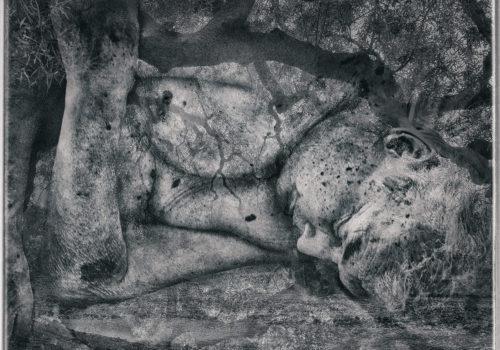With the exhibition La rose et l’olivier (The rose and the olive tree), the artist Barbara Luisi shines the secret light of the flower and the tree. An initiative of the Var department that wishes to promote the arts of today in this high place of heritage.
“Inspired by the community of nuns who, from the end of the 12th century, inhabited these places, the exhibition unfolds through images of bodies, roses and olive trees, like a long visual poem on the virtues and vicissitudes of religious life”, writes Jean-Luc Monterosso, curator of this exhibition and who thus points to the very strong resonance between the works and the abbey of La Celle.
In fact, the olive tree has been present here for a very long time. As early as 558 AD, the monastery housed the tree, in particular with the intention of making it a reservation for the manufacture of candelabra. The photographer has made delicate portraits of them which spread very precisely, on these Mediterranean lands, giving a sensitive image of these discreet beings who have grown since the very beginning of the Middle Ages.
We see gnarled trunks, of an astonishing roughness and we think of the temporal dimension inscribed in the body of the tree as well as in that of the male models photographed by the artist. Middle-aged men who pose naked and on whose skin we see the mark of life, as if they too were trees of experience.
Strength and Immortality
“By sinking into the depths of things, I resonate with this infinity that envelops us and goes beyond us. It’s a bit the same with old trees, like thousand-year-old olive trees that bear the traces of time: nothing is fixed, everything moves, everything evolves around us, but these trees bear witness to the continuity of a flow that ‘we can’t retain, but that photography perhaps helps us to feel and sublimate,” says Barbara Luisi.
On the other side, the celebration of the ephemeral with the corollas of the roses which go gently towards their inevitable withering. Often taken in close-up, the flowers look like mouths that breathe in the smell of gardens and the secret of pollen. “The rose, in nature, evokes beauty”, explains the photographer and adds: “but also fragility and the ephemeral. In opposition, at the other end of the chain, the olive tree represents strength, fertility, immortality.”
Another facet of Barbara Luisi’s work: works made of silk that draw a parallel with the places too. In the 19th century, the site of the abbey of La Celle hosted a silkworms farm. A delicacy that blends perfectly with the portraits of men and roses and the diffusion of violin pieces interpreted by the artist herself. Mark of a sensitivity for multiple arts to be seen in the middle of a magnificent setting.
Jean-Baptiste Gauvin
Barbara Luisi : « La rose et l’olivier »
Curator: Jean-Luc Monterosso
March 19 – Setember 22, 2022
Abbaye de La Celle
9 Pl. des Ormeaux
83170 La Celle, France
https://abbayedelacelle.fr/
Catalogue de l’exposition : les Éditions Elzeviro
















